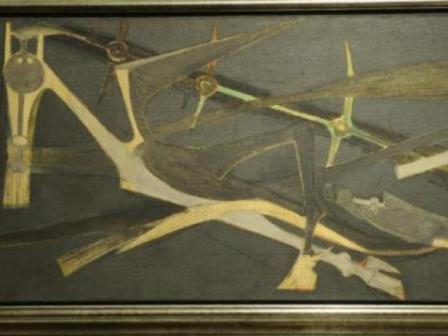A great retrospective on Cuban painter Wifredo Lam at the Pompidou Centre in Paris is aimed at widing the view on the work of this Cuban artist, often pigeonholed under the label of surrealism or the African influence.
More than 400 works including paintings, drawings, photographs, magazines and books are also part of this exhibition to be opened on October 1rst until February 15, 2016, before being presented at the Reina Sofia in Madrid (April 12th-August 15th) and the Tate Modern in London (September 14, 2016-January 8, 2017).
"Through the selection of works and their place in space, we decided to highlight his complex creations and leave the clichés: center-periphery, Latin America, Picasso and Surrealism ", told the curator Catherine David, deputy director of the Musée d'Art Moderne de la Ville of Paris.
The life of Wilfredo Lam who was born in Matanzas western province, in 1920, and died in Paris, in 1982, it was a constant journey through the Caribbean, Latin America and Europe.
Son of a Chinese immigrant and descendant of an African and Spanish mother, Lam studied art in Madrid, in 1920 and sided with the Republicans during the civil war, before moving to Paris in 1938, where he met painter Pablo Picasso.
Through this Spanish maestro, Lam got in contact with the surrealist artists and the writer Michel Leiris, who made him to make incursions in the African art, something clearly present in his work.
A unique opportunity
The retrospective emphasizes the variety of influences and the complexity of a work that has a special place in the history of modern Western art, avoiding stereotypes.
"The Lam´s art, consisted on integrating his work to a modern space and that helped opening a number of elements – he was an amazing inventor of forms- that it could never be possible by itself: the Caribbean culture and hybrid figures, extremely complex, Catherine David said”.
According to Catherine, it really was more about the surrealists who projected on Lam that the other way around. There are some examples of Lam´s illustrations especially that of André Breton, for whom he illustrated the poem titled "Fata Morgana" - during his stay in Marseille at the beginning of World War II while waiting for a visa to return to the Caribbean.
The exhibition includes a little-known period of Lam´s academic training in Spain. It also covers different formats and materials like engraving, replacing the painting from the 1960s and the final installation in Albissola, on the coast of Liguria.
In the exhibition highlighting two large paintings provided by the New York MoMA: “Eternal Present" (1944) and "The Jungle", an oil painting and tempera on paper created the previous year, a colorful work with marked verticality evoking the return to his native island, its wildlife and vegetation.
"When you see The Jungle painting you might think about Matisse not Picasso," Catherine David says. She explains that the picture will return to New York after his stay in Paris, that is it will not be displayed at the Reina Sofia or the Tate.
As often happens with great retrospectives, it´s target lies on that the public can see the Lam´s work as a whole of universal level, fascinated by the esoteric and that everyone can enjoy the interaction among the pieces that are scattered in different corners of the world. "This is a unique opportunity to have a look on all the work of Lam, the curator stressed."
Source: CubaSí











